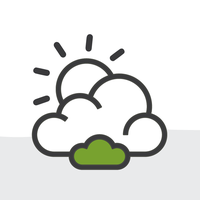
Proactive Admins Do This: Your Go-To Salesforce Maintenance Checklist
Being a great Salesforce Admin isn’t just about building cool automations or solving complex user problems. It’s also about keeping your org clean, secure, and running smoothly over time. Whether you're a new Salesforce Admin, or a seasoned pro, here are a few things to add to your Salesforce maintenance checklist.
Always Build, Test, and Train in a Sandbox
Before making any changes in Production, always test them in a Sandbox first. It’s your safe place to build and test new features, train users, and make mistakes with less chance of compromising the data and applications in your production org.
Pro Tip: Refresh your Sandbox regularly. Arkus recommends doing this quarterly to keep it clean, and up-to-date. As a gentle reminder, each sandbox refresh will overwrite the existing metadata, so be sure there’s no active work or pending ideas in your sandbox. Each sandbox refresh will bring in the metadata from Production.
Stay on Top of Salesforce Releases
Salesforce rolls out major updates three times a year. Make it a habit to review Release Updates regularly, and always test them in your Sandbox first. You never know what surprises a new update might bring, and it’s better for you to find out than for your users to encounter a showstopping error.
Use Salesforce Optimizer (Regularly!)
Salesforce Optimizer is your friend. It helps identify ways to improve performance, clean up unused features, and spot potential issues. As always, Arkus recommends running it in a Sandbox first. Bonus: the Spring ‘25 release brought some changes and enhancements to Optimizer, so it's worth rechecking even if you've run it before.
Back It Up
Ensure you have both data and metadata backups in place. You never think you’ll need them, until it’s too late. If you have questions like, How often can I back up my data?, or Is there any impact on users while Data Export is in progress? Check out Salesforce's Data Export FAQs for more info.
Consider Downstream Impacts
Before adding that shiny new picklist value or enabling a feature a user requests, pause and ask: What is the user really trying to track or solve?
Digging deeper into the actual requirement can save you from over architecting solutions and allows you to get to the root of the request. This is a helpful Trailhead Module. See the section titled, “Collect Requirements and Write User Stories.”
Monitor Paused & Failed Flow Interviews
Flows can be powerful tools that streamline processes in Salesforce, but user error, process changes, and Salesforce releases can cause errors to appear. The Paused and Failed Flow Interviews page in Setup gives you a centralized place to catch flow errors and find more information, so you can fix them proactively.
Review the Setup Audit Trail
Do you have more than one admin making changes in your org? Do you want to see who changed what? The Setup Audit Trail logs recent changes made to Salesforce Setup and Configuration. You can export the last 6 months of changes as a CSV.
Keep in mind that the audit trail won’t show everything (like email sends or all triggered updates). For those, check the record history, Apex Jobs, or DLRS logs (if you’re using Declarative Lookup Rollup Summaries).
Keep Learning
Brush up on best practices and stay current with Trailhead modules like Practice Key Salesforce Admin Best Practices and learn to use out-of-the-box AI tools by completing Drive Productivity with Salesforce AI. With Salesforce, there’s always more to learn.
The more consistent you are with these practices, the healthier and more scalable your Salesforce org will be in the long run, and the more benefit your users, and your organization will see!
Got questions or want to dive deeper on any of these topics? Do you have any items that I should add to my checklist? Let’s connect! I’m on Linkedin @BeckyLipinski or click here to contact Arkus.
After writing, AI tools were used to clarify the messaging in this blog post. Arkus consultants have reviewed the finished text to ensure accuracy and added details where appropriate. When making decisions about how to manage and maintain your Salesforce org, always consult the official Salesforce Help site.
